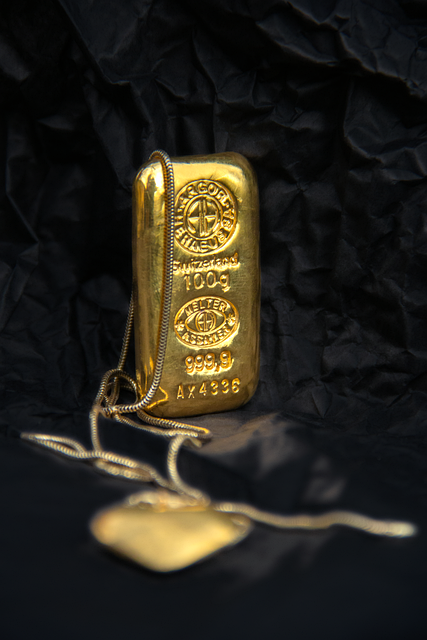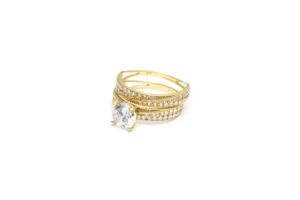
A gold IRA rollover is a process where investors transfer funds from traditional or Roth IRAs, 401(k)s, 403(b)s, Thrift Savings Plans, or other employer-sponsored plans into a self-directed IRA that allows for investment in physical gold and other precious metals. This move is a diversification strategy to complement traditional stock and bond investments within retirement portfolios. The rollover must strictly follow IRS guidelines to maintain the tax-advantaged status of these savings, with direct rolls generally avoiding taxes if completed within two months. Precious metals in a Gold IRA are subject to tax upon withdrawal, with the specific tax rate depending on whether the funds originated from a traditional or Roth account. Early withdrawals before age 59½ may also incur penalties unless an exception applies. It's crucial to consult with financial advisors and tax professionals to ensure compliance and optimize tax outcomes for this investment strategy. Keyword: Gold IRA rollover.
When considering a strategic shift in your retirement savings, understanding the nuances of a Gold IRA rollover can be pivotal. This article serves as a comprehensive guide for investors exploring the eligibility and process of transferring funds from traditional retirement accounts to a precious metals IRA. We’ll navigate through the essentials, including the types of accounts eligible, the step-by-step rollover procedure, tax considerations, and selecting the right metals for your investment portfolio. Additionally, we’ll delve into common pitfalls to avoid, maintaining eligibility, and how market dynamics influence your decision. With a clear legal and regulatory framework, comparisons to other retirement options, and insights from successful case studies, you’ll be well-equipped to make an informed choice about your Gold IRA rollover.
- Understanding Gold IRA Rollover Basics
- Eligibility Criteria for a Gold IRA Rollover
- The Types of Accounts Eligible for Gold IRA Rollover
- The Rollover Process: Step-by-Step Guide
- Key Considerations Before Initiating a Gold IRA Rollover
- Tax Implications of a Gold IRA Rollover
Understanding Gold IRA Rollover Basics

gold ira rollover can be a strategic financial move for individuals looking to diversify their retirement portfolio with precious metals. This process involves transferring funds from an existing tax-deferred account, such as a Traditional or Roth IRA, into a self-directed Gold IRA. Understanding the nuances of a Gold IRA rollover is crucial for ensuring that the transaction is executed correctly and that it adheres to the IRS regulations. The rollover process must be completed in a manner that maintains the tax advantages of your retirement savings, which includes a direct transfer from the old account to the new Gold IRA without any intermediate handling by you to avoid potential taxes and penalties.
To engage in a gold IRA rollover, you must meet specific eligibility requirements set forth by the IRS. Typically, as long as you are within the legal retirement plan rollover age limits and your funds are from an employer-sponsored plan like a 401(k), 403(b), or another type of IRA, you may be eligible. It’s important to note that there are two types of rollovers: direct and indirect. A direct rollover is straightforward, where the funds go directly from the old account to the new Gold IRA. An indirect rollover involves receiving a distribution from your existing IRA and then depositing it into your Gold IRA within 60 days. However, this method may be subject to a 20% withholding by the financial institution managing your old IRA, which could impact your taxable income. Therefore, understanding the gold IRA rollover process and the associated rules is essential for a seamless transition that leverages the potential benefits of investing in gold and other precious metals within your retirement strategy.
Eligibility Criteria for a Gold IRA Rollover

Gold IRAs offer a valuable opportunity for investors to diversify their retirement portfolios with physical precious metals. To be eligible for a Gold IRA rollover, individuals must have an existing retirement account such as a traditional or Roth IRA, 401(k), 403(b), Thrift Savings Plan (TSP), or another employer-sponsored retirement plan. The rollover process involves transferring funds from these accounts into a self-directed IRA that permits the investment in gold coins, bars, and other approved precious metals. It’s crucial to adhere to the IRS rules regarding rollovers to ensure tax advantages are maintained.
The IRS sets clear guidelines for rollover transactions, including a 60-day window for completing a direct rollover and a one-rollover-per-year limit to prevent frequent liquidations that could trigger taxable events. Additionally, the gold or other precious metals held within a Gold IRA must meet specific fineness requirements set by the IRS. Investors should verify that their chosen Gold IRA provider complies with these standards and that the metals are sourced from IRS-approved refiners or mints. Understanding these eligibility criteria is essential for a successful Gold IRA rollover, ensuring that your investment in precious metals is both compliant and beneficial for your retirement savings strategy.
The Types of Accounts Eligible for Gold IRA Rollover

401(k) plans often serve as a foundational block for a Gold IRA rollover. Individuals who have accumulated funds within a traditional or Roth 401(k) account can roll these assets into a self-directed IRA that allows for the investment in precious metals like gold. This process enables investors to diversify their retirement portfolios beyond conventional stocks, bonds, and mutual funds. Another type of account eligible for a Gold IRA rollover is a 403(b) plan, which is similar to a 401(k) and is often associated with tax-exempt organizations such as nonprofits or public schools. Additionally, Thrift Savings Plan (TSP) accounts, particularly those of federal employees, federal postal workers, and members of the uniformed services, can also be rolled over into a Gold IRA. The eligibility for a rollover is not limited to these accounts; pension plans, annuities, and even inherited IRAs may be converted into a Gold IRA under specific conditions, allowing for the inclusion of physical gold, silver, platinum, and palladium as part of one’s retirement strategy. It’s crucial for potential rollover candidates to consult with a financial advisor or tax professional to ensure that their rollover meets IRS regulations and to understand the implications of investing in a Gold IRA.
The Rollover Process: Step-by-Step Guide

When considering a gold IRA rollover, it’s crucial to understand the step-by-step process that facilitates this financial transition. The rollover process for a gold IRA begins with identifying an eligible retirement account from which you intend to roll over funds. This could be a traditional IRA, a Roth IRA, or another employer-sponsored retirement plan like a 401(k) or 403(b). Once you’ve chosen the account, your next step is to contact the custodian managing your current retirement funds to initiate the rollover. The custodian will provide you with the necessary forms and instructions to proceed.
You’ll need to complete a direct rollover request form, specifying that the distribution should be directly transferred to your new gold IRA custodian. It’s important to ensure that the funds go directly from the old account to the new one to avoid any taxable event. The receiving gold IRA custodian will expect the incoming funds and will also provide you with information on their supported investment options, which typically include a variety of precious metals like gold, silver, platinum, and palladium. After the custodian of your existing retirement account sends the check to the new gold IRA custodian, they will then deposit the funds into your new gold IRA. Throughout this process, it’s imperative to keep records of all transactions and communications for your own reference and to comply with IRS regulations. By carefully following these steps, you can successfully complete a gold IRA rollover, diversifying your retirement portfolio with physical gold and other precious metals.
Key Considerations Before Initiating a Gold IRA Rollover

When considering a Gold IRA rollover, it’s crucial to understand the intricacies involved to navigate the process effectively. The Internal Revenue Service (IRS) mandates specific rules and regulations for such transactions to maintain their tax-advantaged status. One of the key considerations is the type of retirement account you are rolling over. Traditional, Roth, and SEP IRAs can be rolled into a Gold IRA, but the rules differ based on the original account type. Another vital aspect is the age factor; early withdrawal penalties may apply if you are under 59½ and opt for a direct rollover.
Before initiating a Gold IRA rollover, it’s essential to identify an IRS-approved custodian for your precious metals. This custodian will handle the transaction and ensure compliance with all regulations. The metals accepted in a Gold IRA are also subject to strict guidelines; they must be pure gold, silver, platinum, or palladium, with fineness as mandated by the IRS. Additionally, the metals should be obtained from a reputable dealer or refiner accredited by an authorized assay office. Understanding these requirements and preparing the necessary documentation is imperative to avoid disqualification of your Gold IRA. It’s also prudent to closely monitor the tax implications of your rollover, as different account types may affect your tax liabilities differently.
Tax Implications of a Gold IRA Rollover

When considering a Gold IRA rollover, understanding the tax implications is crucial for investors to navigate this financial maneuver effectively. A Gold IRA rollover involves transferring funds from an existing retirement account, such as a traditional or Roth IRA or a 401(k), into a self-directed IRA that allows for investment in precious metals. The Internal Revenue Service (IRS) provides specific guidelines regarding these transactions. Typically, a direct rollover from one traditional IRA to another, or from a 401(k) to an IRA, is not subject to tax as long as the funds are rolled over into another qualifying plan within 60 days of receipt. However, if the rollover involves a Roth IRA, the original contributions (but not earnings) can be withdrawn tax-free, provided certain conditions are met.
It’s important to note that when you roll over funds into a Gold IRA, the value of the gold is subject to taxes when it’s eventually withdrawn. The taxes depend on the type of IRA from which the rollover occurs—whether it’s traditional or Roth. Withdrawals from a traditional Gold IRA are taxed as ordinary income at the time of distribution, whereas withdrawals from a Roth Gold IRA are tax-free if certain conditions are satisfied. Additionally, early withdrawal from a Gold IRA before reaching the age of 59½ may trigger additional taxes and penalties unless an exception applies. Therefore, it’s essential to carefully plan and consult with a tax professional or financial advisor to understand the tax implications associated with a Gold IRA rollover and to ensure compliance with IRS rules and regulations.
When navigating the intricacies of a Gold IRA rollover, it’s imperative to have a comprehensive understanding of the eligibility requirements and the associated process. This guide has delineated the fundamental aspects of Gold IRA rollovers, from the basic principles to the specific types of accounts that qualify, ensuring readers are well-informed on how to proceed. By adhering to the step-by-step rollover process and considering the tax implications, individuals can make informed decisions about their retirement savings. For those interested in diversifying their retirement portfolio with precious metals, understanding the eligibility criteria for a Gold IRA rollover is a crucial first step towards securing financial stability post-retirement.







